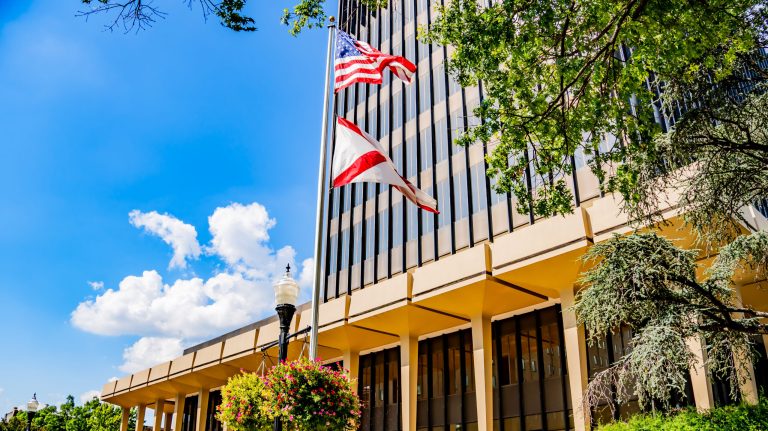Reviewed by: Michael Seale
NEW: The rocket test stand on the arsenal to be removed
Reading time: 3 minutes

Marshall Space Flight Center has announced plans for a large-scale update to its campus which includes the removal of several pieces of space history including the rocket test stands and the neutral buoyancy tank.
The plans will also expand the campus in the coming decade.
The rocket test stand


At one point, the rocket test stand at Marshall (formally called the Dynamic Test Stand) was the largest structure in Alabama.
At 363 feet tall the rocket test stand is viewable throughout parts of Huntsville (you might have seen it off in the distance from the parkway).
The test stand was used during the Apollo era to test fully constructed Saturn 5 rockets and later during the shuttle program to test the various shuttles and tanks (both pictured above).
The campus update also includes the removal of the neutral buoyancy tank, a 1.3 million gallon tank that was used to simulate near weightlessness.
What’s next?

The old infrastructure is expensive to maintain and in this modern day, obsolete. In all, 19 structures will be removed or replaced.
“The upkeep of aging facilities is costly, and we have to put our funding where it does the most good for NASA’s mission. These are tough choices, but we have to prioritize function and cost over nostalgia. We’re making way for what’s next.”
Marshall master planner Justin Taylor
The rocket test stands and other structures have been thoroughly documented and preserved in photographic and written records which will be made available to the public through the Library of Congress’s permanent Historic American Engineering Record Collection.
The demolitions should take place throughout next year and the campus plans to add several large-scale 50,000-120,000 square foot facilities to the campus over the next decade.
Want to keep up with all the good news happening around Huntsville? Follow Hville Blast on Facebook, TikTok and Instagram, and be sure to subscribe to our newsletter.



